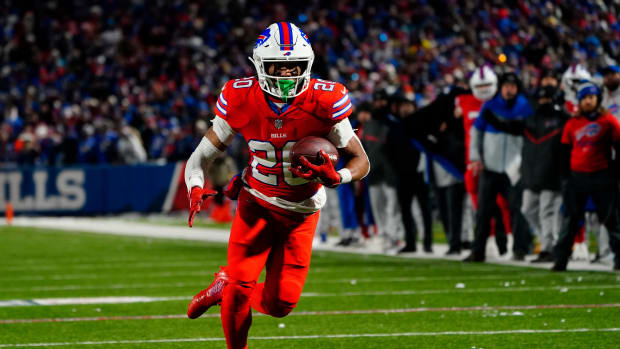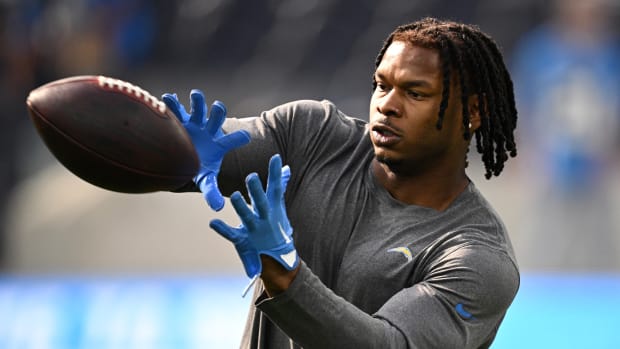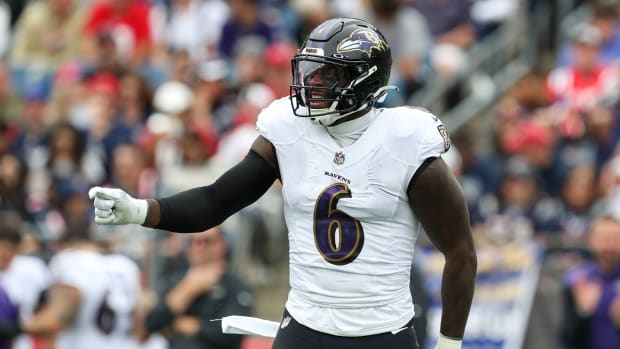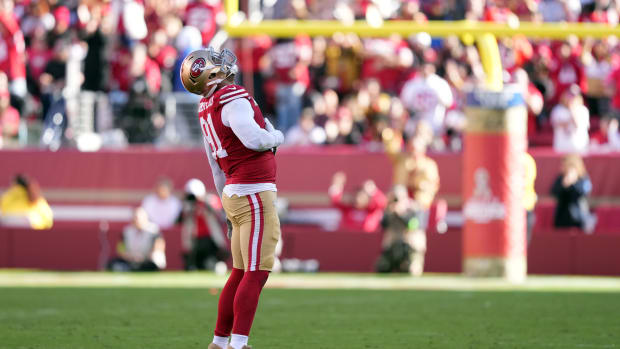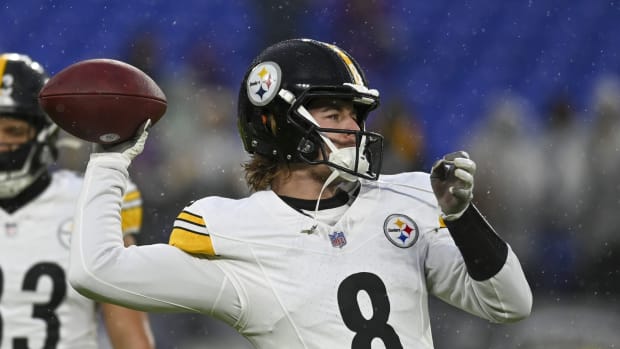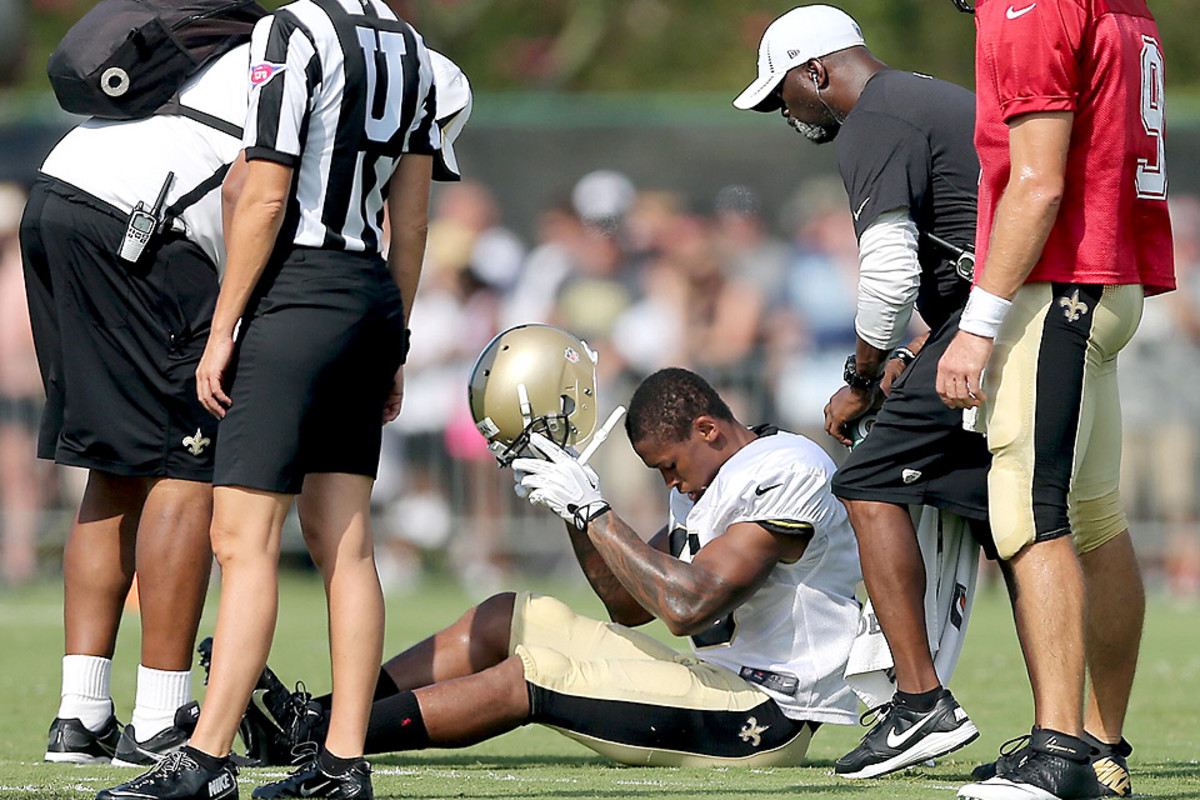
Feeling the Pain of the Preseason
When asked to name something about working for an NFL team that people would be surprised to learn, I often describe the amount of time front offices spend on injury and medical issues. And that amount is increasing every year.
The injury factor in the NFL influences management decisions—and game outcomes—as much as any other dynamic in the game. The best laid schemes, plans, depth charts, scouting metrics, etc. can be altered in a heartbeat based on injuries not only to star players, but to backups and even fringe players. At this time of year I often remember a line from Packers general manager Ted Thompson, who was animated (for him) on this subject: "Injuries are the bane of our existence."
Early exits
The early part of training camp commonly brings sprains and strains of hamstrings, glutes, groins, calves, ankles, etc. The immediate ramp-up from vacation to the intensity of practice is a recipe for muscle pulls, frustrating coaches who, limited by CBA restrictions, crave on-field time with the players.
This year, there have been a rash of more serious season-ending injuries to players such as Jeremy Maclin, Dennis Pitta, Danario Alexander, Joe Morgan, Dan Koppen and Bryan Bulaga—all before a preseason game was even played.
Jeremy Maclin was one of the first players to suffer a season-ending injury in this year’s training camp.
Theories to explain this early cluster of injuries abound, although all are speculative. Some suggest the extended time away for players in the offseason due to the new CBA is a factor, although there was no similar data after the locked-out offseason of 2011 or with the same schedule as this year in 2012.
No team is immune from injury, but there are ways to attempt to lessen the odds: fewer "live" full-contact practices, avoiding players with injury histories, more joint-specific training, etc.
Speaking of training, strength and conditioning staffs have started to emphasize core work and injury-preventive measures more in recent years. The more focus on injury prevention, the better, in my opinion. This is an area ripe for positive change.
Diagnosing the Ravens' post-Pitta problem
The business of injuries
The NFL salary cap is unforgiving, including not only active players but also those on practice squad, PUP, injured reserve, etc. Although the active roster limit is 53, some teams end up carrying over 70 players on their cap by late in the season due to injury issues.
Many players have "split" contracts that designate a lower salary if the player is placed on injured reserve. Some splits only trigger in the preseason; others activate any time of year if the player moves off the active roster. Some splits are for the minimum split number ($288,000 for rookies this year); others for a higher amount between the minimum split and the "up" salary ($405,000 for rookies this year). The variances are based on leverage, or lack thereof. In some contracts, negotiations over the split can be more involved than those over salary and bonus.
In managing the cap, I tried to enter training camp with $10 million of room, budgeting for in-season player extensions and expected injury issues. Better to be conservative in planning for injuries that may never happen than be unprepared if and when they occur.
Availability and durability: added value
On the other side of the injury equation are players who rarely, if ever, miss time. Availability and durability are qualities that, in my experience, cannot be overestimated. I regularly factored them into contract decision-making.
Players can be extremely talented and/or have exceptional work ethic, but they need to be available. During my nine years in Green Bay, Brett Favre provided us great value beyond his performance on the field. We never worried about the availability of our best player at the game’s most important position.
The down side to Brett’s uniqueness was that he made it virtually impossible to sign free agent backup quarterbacks. I constantly heard from agents and players of potential veteran backups—before drafting Aaron Rodgers—with comments such as "I want at least a chance to play!"
Players can be extremely talented and/or have exceptional work ethic, but they need to be available.
"Get him out of here!"
Far removed from the headlines of training camp are the tiny agate-type transactions of injury settlements: negotiated payouts for players not projected in the team’s future plans.
As I wrote last week, many players on training camp rosters have little to no chance of making their teams. When these players are injured, their value to the team—taking reps in practice and preseason games so regular players can rest—is greatly diminished. They then become extraneous parts, diverting resources of the training and conditioning staff away from frontline players. Thus, with players like this, I would often hear the instruction in the headline above: "Get him out of here!"
Teams cannot release injured players; doing so subjects them to an injury grievance. Thus, an injury settlement precludes the player from filing a grievance in exchange for payment for the projected time of healing and rehabilitation (elsewhere).
These settlements—I negotiated dozens of them—are an awkward dance, with the team projecting one healing period and the agent, often through a second opinion, projecting another (longer) one. Common ground is usually reached, although some do not and end up in front of an arbitrator months later.
I tried to handle injury settlements as humanely as possible, but it's a merciless ritual: the team wants the player to go away and pays what is required to make that happen.
As the interminable march to the regular season continues, many injured players will be left in the wake of the preseason. In a variation on my mantra on the business of football: so many (injured) players, so few jobs.
And now, your questions ...
What is the goal of preseason games from a team perspective?
Coming out healthy. In watching these games, I would say only two words: "Get up!" I would focus my binoculars on any player who stayed down on the ground longer than usual, following them to the bench to watch their interaction with the trainer and/or doctor.
There is little good that can come out of these games, but a lot of bad. Injuries are a necessary evil—just see above—but they always feel worse when they happen in a meaningless preseason game.
I understand that coaches do evaluate players and that some players flash in these games, but the truth is that most decisions on players are not influenced by preseason games.
What about scouting preseason games; is there any valuable information teams get?
Yes, preseason football presents players auditioning for future waiver claims and signings. In the press box at any preseason game are about a dozen scouts from around the NFL, clad in their team-issued gear, checking out players who may be released soon. In fact, our scouts were never at our preseason games; they were evaluating rosters at other games.
When the average fan has long tuned out of these games, due to unrecognizable names and faces filling out their favorite team’s jerseys, the work of the team scouts truly begins. This is where they determine if other bottom-of-the-roster players are better than their own bottom-of-the-roster players. Scouts report back to their general manager with things such as "I saw a safety who's better than our fourth safety," meaning we would look for that player’s name on the waiver wire.
In other words, the latter parts of preseason games are more about players playing for the rest of the league, as their employment relationship with their existing teams is likely to soon end.
What are some interesting preseason memories you have?
Most involve the weather. I remember playing against the Chiefs in the Hall of Fame game, a game mercifully called in the third quarter due to lightning and torrential rain in Canton that night.
I remember playing in Cleveland and, soon after checking into our hotel the night before the game, the power went out. I remember watching 90 players sit in the lobby by candlelight, and I negotiated a contract extension for one of our players on a hotel napkin lit by flashlight.
Ask Away
Got a question for Andrew Brandt? Hit him up on Twitter and he might answer it in a future mailbag.
Then there was a home game against the Titans one year in our last preseason game. The skies opened up in the second half and lightning caused the referees to clear the field and delay the game.
The starting players had long since exited; the game was full of fringe players, most of whom were to be released the next day. Fans were filing out the doors. After talking with Titans general manager Floyd Reese and getting our coaches’ blessings, we called the league office to see if we could end the game at that point before players were needlessly injured.
Word came back to us that Commissioner Tagliabue, reached at a dinner engagement, ordered the game finished, no matter the hour. The game then re-started sometime after midnight in front of a smattering of diehard (and well-lubricated) Packer fans. And yes, a couple players suffered injuries requiring injury settlements when released the next day.
I will never forget having to complete that meaningless game after midnight on a slippery field. Like the Hall of Fame game, it should have been called.
The NFL says it is studying how to improve the preseason. Thoughts?
The NFL has been trying to improve the preseason, or fan interest in it, for some time. However, absent a mandate for teams to play their starters for a certain amount in these games—a directive that would be a nonstarter with teams—there is little to be done.
The NFL will continue to try to find a way to "fix" preseason football. Speaking of which ...
Is the NFL still talking about two preseason games and 18 regular season games?
The 18-game season discussion hit a nerve with players, fans and media as a hypocritical money grab for a league that champions the importance of player safety. The NFL faced outrage over the issue in the most recent CBA negotiations, so it wisely backed off ... for now.
My sense is that the 18-2 concept, as the NFL refers to it, will resurface at some point. It has two huge benefits for the NFL: (1) additional revenue estimated at $500 million per season, and (2) solving the "preseason problem" by cutting it in half.
If and when the NFL raises the issue again, it would be wise to first quietly meet with player leaders about the benefits: increased revenues that positively impact the salary cap, extra bye weeks, the same 20-game total structured as 18-2 instead of 16-4, etc. Although dormant for the time being, I believe reports of the death of the 18-game season have been greatly exaggerated.

































